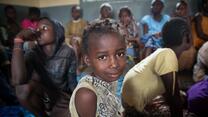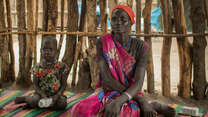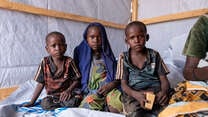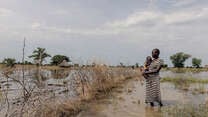Authors: Naoko Kozuki, Katja Ericson, Bethany Marron, Yolanda Barbera, Nathan Miller
Background
Pneumonia, diarrhoea, and malaria are the leading causes of death among post-neonatal under-five children. Integrated community case management (iCCM) of childhood pneumonia, diarrhoea, and malaria, has been promoted as a strategy to increase access to life-saving treatment. Large-scale implementation of iCCM in countries affected by conflict or natural disaster may help address the increased burden of morbidity and mortality and decreased access to care in emergency contexts.
In December 2013, conflict broke out in Juba, South Sudan, which eventually spread to Payinjiar County in February 2014. The efforts of the International Rescue Committee (IRC) and other consortium partners to provide life-saving treatments to children in South Sudan became more critical as the conflict intensified. However, it was not clear how the iCCM programs in South Sudan were affected by and responded to the crisis.
The objective of the study was to document the experiences in implementing iCCM in the emergency setting of South Sudan, during the acute emergency in late 2013 / early 2014 and the subsequent protracted emergency context.
Methods
This was a mixed methods case study, conducted in May 2015. 20 key informant interviews with stakeholders such as policymakers, MoH officials, and program staff were conducted, and a total of 13 focus group discussions were conducted with Community-Based Distributor (CBD) Supervisors, community leaders, CBDs, and caregivers. IRC’s routine iCCM program data, covering activity from December 2012 to January 2015, were examined to assess the effect of the crisis on key indicators. Quantitative data analysis of routine program data included examination of standard iCCM performance indicators and treatment rates before, during, and after the crisis.
Results
Internally displaced persons nearly doubled the population in Payinjiar from 44,224 to 83,433. Displacement not only included IDPs from outside the county but also displacement within the county, particularly from payams where active conflict took place.
Some CBDs continued to work in communities largely unaffected by the crisis but received IDPs, while other CBDs continued working where they were displaced to, if they were able to take their supplies with them. Despite no formal strategic community mobilization effort specifically aimed at IDPs by the iCCM program management, the information that CBDs had drugs spread widely throughout displaced communities, with large numbers of caregivers subsequently seeking care from the CBD. Displaced CBDs and CBD Supervisors were occasionally tracked down by their home community members to notify them when it was safe for them to return to their home communities. Caretakers preferred seeking care from CBDs over risking an insecure journey to the MoH health facility and/or arriving to a facility they believed may have been destroyed or looted or would not have staff or drugs available for treatments.
The total number of treatments provided per month dropped from the July-December 2013 average of 3226 to the lowest level of 1420 in February 2014, but recovered to 3270 by August 2014. CHW supervisors attempted to continue supervision by utilizing their networks to track down displaced CHWs and by assessing the security situation prior to visits. The monthly supervision rate dropped from the July-December 2013 average of 93% to the lowest level of 77% in February 2014, but recovered to 91% by August 2014. Several CHWs and community leaders qualitatively validated this claim of sustained supervision. The rates of treatment per child were consistently higher for CBDs than for health facilities, but likely due to restrictions in stock, the CBDs were not able to meet the expected need when considering the estimated influx of IDPs.
Conclusion
During and immediately following the acute crisis in late 2013 / early 2014, the iCCM program in Payinjiar County was able to continue services as evidenced by sustained high rates of reporting among CBD providers and supervisors, a quick recovery in the number of treatments provided by CBDs after an initial drop during the acute crisis. Qualitative information capture from caregivers also noted the availability and access to CBDs during this period. There was no cessation in activity. Many CBDs continued to provide treatment, either in their home communities or in areas where they were displaced to if they were able to bring their supplies and still had drugs.
International donors and humanitarian actors should recognize iCCM as a potentially high-impact humanitarian response. Flexible funding from donors would allow for development of more evidence on iCCM approaches and improvements that can both sustain and enhance programming in acute crisis.



